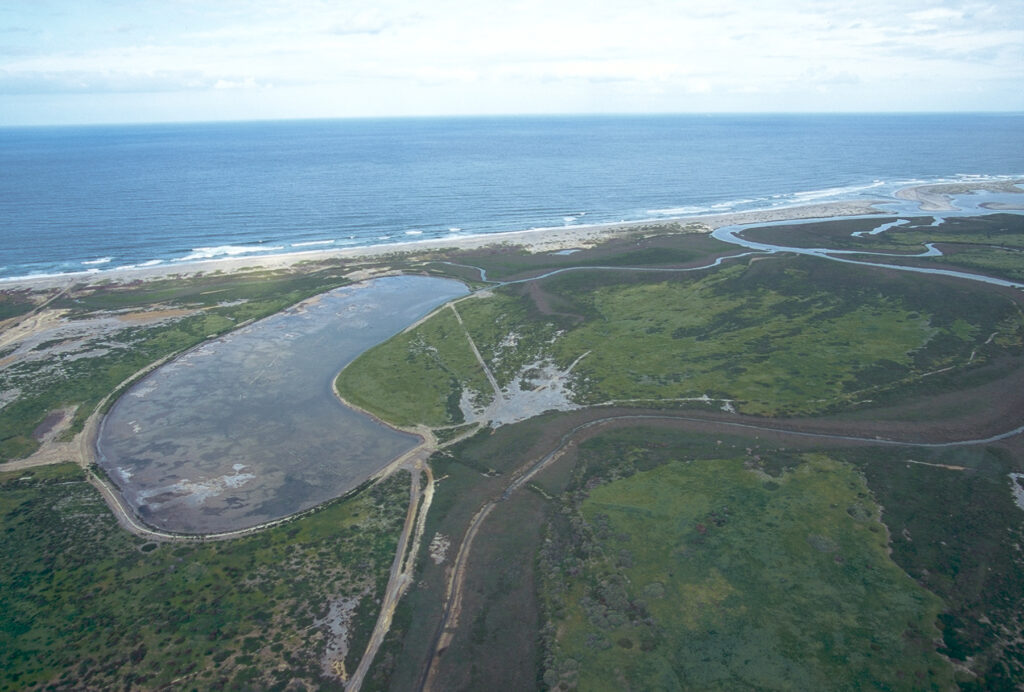Tijuana Estuary Tidal Restoration Program (TETRP) II Phase I
(SCH # 2021050599)
The California Department of Parks and Recreation and the U.S. Fish and Wildlife Service have issued for public review and comment a Draft Environmental Impact Report/Environmental Impact Statement (DEIR/EIS) that evaluates potential environmental effects associated with the proposed Tijuana Estuary Tidal Restoration Program II Phase I. TETRP II Phase I would restore between 82 to 87 acres of coastal wetlands and associated native upland habitats within the Tijuana River National Estuarine Research Reserve on portions of both Border Field State Park and the Tijuana Slough National Wildlife Refuge.
For more information, click here for the latest Restoration Update for this project.
To view a scanned version of the 1991 TETRP EIR/EIS, click here (26MB).
Important Dates, see https://trnerr.org/about/public-notices/ for details:
May 24, 2023 - NEPA Record of Decision issued (US Fish & Wildlife Service)
March 31, 2023 - Final EIR/EIS published in the Federal Register
March 24, 2023 - CEQA Notice of Determination issued in the State Clearinghouse (CA State Parks)
October 3, 2022 - Draft EIR/EIS comment period ends
September 8, 2022 - Virtual Public Meetings for DEIR/EIS (1pm and 6pm)
August 19, 2022 - Draft EIR/EIS comment period begins - NEPA Notice of Availability and CEQA Notice of Availability issued
July 12, 2021 - Scoping Process comment period ends
June 16, 2021 - Virtual Public Scoping Meetings (2pm and 6pm)
For meeting materials, see https://trnerr.org/about/public-notices/.
May 27, 2021 - Notice of Intent and Notice of Preparation issued,
comment period begins
Funding for TETRP II Phase I comes from:
State Coastal Conservancy (http://www.scc.ca.gov)
State of California Wildlife Conservation Board (https://wcb.ca.gov/)
TETRP I Projects
Oneonta Tidal Linkage
The Oneonta Tidal Linkage project, completed in 1997, was designed to improve tidal circulation in areas of mudflat and salt marsh habitat. To accomplish this, a long abandoned sewage treatment basin area known as the "tidal ponds" was connected to Oneonta Slough. Through channel connections, Oneonta Slough meets up with the ocean and thus changes along with the daily oceanic tides.
This project quickly achieved its goals of providing 2 acres of habitat for wetland species and water quality benefits to some 200 acres of salt marsh vulnerable to sedimentation.
The Model/Friendship Marsh
This Model Marsh, created in 1999-2000, was the first phase of the larger Friendship Marsh project. It is a unique and innovative project that focuses on the restoration of diverse ecosystems such as tidal mud flats, cordgrass habitat and marsh plain that were lost due to the deposition of sediment throughout the Tijuana Estuary over time. In the midst of an urban environment many cooperating organizations designed and implemented a program that included excavation, re-vegetation and natural species colonization. Various researchers will monitor the restored tidal marsh for at least ten years to examine the biological success, as well as efficiency of restoration techniques. The 20-acre marsh was dedicated as Friendship Marsh on April 29, 2000 and plans for further expansion in 2001-2002 were made. More details on the project can be found here.
Goat Canyon Enhancement Project
Goat Canyon, or Cañon de los Laureles, and its creeks are located within the Tijuana River watershed just inland of the ocean. This 4.6 square-mile sub-watershed contains steep slopes, sandy soil and rare coastal sage scrub and riparian habitats. Human activities and land use have disturbed and altered this area, increasing sedimentation and erosion, resulting in habitat losses, public access problems, and safety hazards.
The Goat Canyon Enhancement Plan, completed in 2000, outlines a program for Goat Canyon. This program includes construction of sediment management basins and creek restoration. To find out more of this project read more here.

